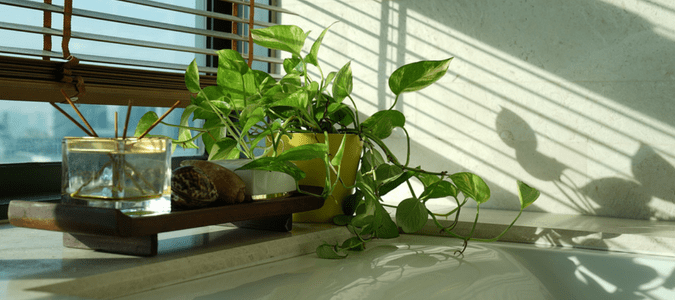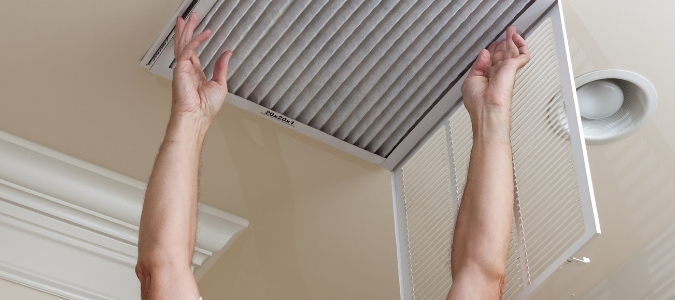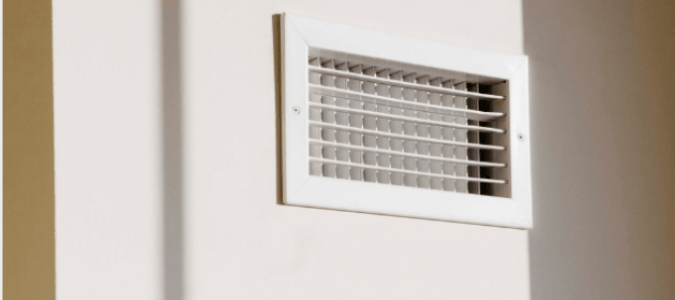When the temperatures start to rise, we can all be very thankful for the invention of the air conditioner. The cool air pouring from the vents brings the inside temperatures down to a livable level. The cool air pouring from the vents brings the inside temps down to a livable level.
Hot air might make you uncomfortable, but high humidity can trigger breathing issues for people with asthma or other disorders. It also can increase the chances of mold growing in your home, which is a whole other problem. So removing that moisture from your home’s air is important for several reasons. Doesn’t the air conditioner do the job?
The short answer is yes, but there is more to it. An air conditioner does reduce the amount of moisture in your home. However, it does so as a secondary benefit to its main job, which is to cool the temperature of the air. Let’s look at how an AC unit works.
The unit’s compressor pulls refrigerant through the tubes of its evaporator coil. The evaporator coil’s big job is to cool the refrigerant, which happens when a fan blows air over the coil. When the refrigerant is cold, it turns into a vapor, which pulls the heat from the air and makes the home more comfortable.
So how does that affect humidity? When the AC cools that air as it passes over the evaporator coil, moisture in the air condenses. This condensed water vapor’s weight pulls it down the system and it drips into a pan beneath the coil and runs out through a drain line. Any time you remove water from the air, obviously the humidity drops. However, there is a limit to what your air conditioner can do with the humidity. And if you notice that your system seems to be pulling less and less of the moisture from the air inside your home, it’s probably time to contact a licensed HVAC professional. They can determine what could be affecting its functionality and let you know if you need any AC repairs.
One common cause of higher levels of humidity is having a dirty air filter. While some homeowners change out their filters, others have washable filters.
How To Clean Air Conditioner Filter
One common issue that reduces your air conditioner’s ability to remove moisture is an accumulation of dust in your unit’s filter. A dirty filter makes it harder for your AC to pull in air for cooling, and it can also retain moisture from the air it does pull in.
The air conditioner has to work harder and harder to try to cool the home. That extra exertion only serves to wear out the unit’s components faster, use more electricity and increase your utility bills. And a soggy, dirty AC filter is also a prime environment for mold to flourish and then be pushed through the vent system throughout your home. That’s bad for your home and for all the people and pets living in it!
Every air conditioner requires a filter of a specific size. If you aren’t sure of the dimensions, look on the outside of the dirty one. The filters generally have the numbers you need printed right on them. Many AC filters are made of paper or cardboard and are disposable. So, you don’t have a choice to do anything other than take out the old and toss it before installing a clean, new filter.
These days, advances in technology and manufacturing have led to a variety of air conditioner filters that are washable. Many people stock up on filters that fit their AC unit so they won’t be without one in the event that it needs to be swapped. But, you might consider spending a little extra money up front to make the switch to a filter that you can clean yourself. You’ll always have a filter available and won’t have to run out at the last minute to a home improvement store to grab a new disposable one!
In either case, when it’s time to swap out a disposable filter or clean a reusable one, first turn off your AC system. If it is running while you are working on filter maintenance, the unit will pull in unfiltered air and push it out throughout your home.
Then, take out the old or dirty filter. Be sure to check all the system’s vents because some types of air conditioners have more than one filter. The best way to get the most dirt and dust out of the filter is to start with a handheld vacuum or a hose attachment from a regular upright vac.
You will likely find some sediment or grime on the filter’s frame or in between the slats. So, after vacuuming, take a microfiber cloth and wipe off as much of the grime as you can. Don’t use a paper towel or bath towel, as the fibers will stick here and there and you won’t get the filter as clean as it could be.
If the filter still needs cleaning, it will need to be washed. Because most filters are too large to fit in a sink, try lying it on the ground and use your garden hose to spray out the lingering dirt. Don’t use anything with a lot of pressure, because that can easily damage the filter.
Sometimes, especially if it has been a long time since you checked and cleaned the filter, even after all these steps, stubborn dirt remains. At that point, try lying the filter in a flat bin or maybe a bathtub and soak it in one part warm water and one part white vinegar for an hour or so. Rinse it off again gently with a hose and let it dry.
When the reusable filter is clean and dry, look it over to make sure there are no tears or other damage. If not, then it is fine to put back into your AC. Though this type of filter can be cleaned and used again, it won’t last forever. Make note of information from the filter’s original packaging that indicates the suggested life of the filter and replace it when it is near the end of its life. This process isn’t necessarily difficult, but it can be time-consuming.
AC Drain Line Clogged Symptoms
An air conditioning system’s drain line removes the condensed water vapor, reducing your home’s humidity. However, that drain can become clogged, causing water to back up and leak into your home. Left unchecked such leaks can ruin a roof, ceilings and flooring, depending on where your AC is located. It is important to keep an eye on how your AC is draining.
Normally, the condensation would go into a drip pan, then drain out of your home through a hose. If you notice water pooling anywhere around where your AC is housed, one of the first things you should check is whether the drain line is clear or clogged.
Similarly, a drip pan that is full of water means that something is keeping the water created in the AC process from draining away as it should. Immediately drain out the drip pan and contact a licensed AC professional to determine next steps.
The presence of mold around your unit’s drip pan or a persistent dirty sock smell throughout your home should also raise alarm bells. Any indication of mold is likely linked to a problem with an air conditioning system, and a clogged line is a frequent source.
You can try to unclog a drain line yourself by removing the cap on the line and slowly pouring hot water or a special drain cleaner down the hose to see if it loosens the clog. Stop immediately if you notice that the water level in the drain pan isn’t lowering or if what you are pouring comes back up. If you notice that your AC drain line keeps clogging, it’s time to contact a specialist.
Using a licensed professional to perform regular AC maintenance not only keeps you from having to remember when it’s time to change a filter or check the line, but it also ensures that your air conditioning system is working at peak performance when you need it most. No one wants to find out they have an AC problem when the temperatures are rising! Breathe easy by letting the experts keep you cool and your air conditioner—and your family—happy.
ABC Can Make Your Home Comfortable
Having a cool but humid home is uncomfortable. Fortunately, the AC experts at ABC Home & Commercial Services can help. Our licensed pros can handle any AC repair you may need. This way, you and your family can escape the heat and the humidity. Additionally, when the temperatures drop, we can provide heating repairs.



